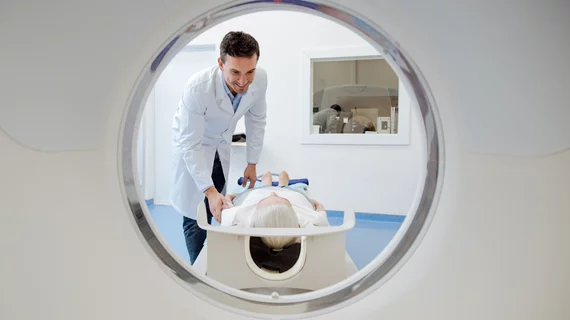After radiologist Frank Giargiana Jr., MD, felt a sharp pain in his back while moving boxes in November 2016, he was soon forced to step out of the reading room and face cancer from a new perspective.
Muscle relaxants prescribed by his primary care doctor didn’t work, so the now 79-year-old former rad went to a physiatrist who quickly ordered a lumbar spine MRI after Giargiana couldn’t lift himself off the exam table. He had no choice but to wait until January 2017 for his follow-up scan after struggling to get in a week before Christmas.
“Patience has always been a virtue for me, but it was stressful waiting for results, realizing the differential diagnosis for the MRI findings,” Giargiana, who practiced general and interventional radiology along with nuclear medicine for 30 years in Baltimore, wrote in Radiology: Imaging Cancer. “This is when I realized that I was now the patient!”
After undergoing an interventional procedure at the hands of a former colleague, the results came back as myeloma. Giargiana went on to experience more hip and leg pain. And like many patients, he struggled to schedule appointments. But the former rad was ultimately diagnosed with nonsecretory multiple myeloma, an uncommon form of the disease.
His initial whole-body scan proved particularly challenging.
“A 2-hour examination, without a break, was a real test of my ability to lie still,” he added. “I developed a new sense of what patients experience (while in that confined space), wondering what the results will be when the study is read and discussed with the patient at a follow-up visit.”
As of his July 30 editorial, Giargiana is in remission, and there have been many insights along his journey. While Giargiana could call his former colleagues to discuss scan results and look over his own images, most patients don’t have that luxury.
“I know that I can drop by the next day to pick up a report, but it does not show up on the patient portal until the referring healthcare provider has had a chance to review it—four days or so later,” the retired rad wrote. “This is not good for the patient’s needs.”
He also says patients should be able to contact reporting radiologists, and imaging results should be available shortly after readings are finished.
Giargiana has lobbied his former practice to make such changes to no avail. But he will continue to challenge his old group on their policy, he wrote.
Read the full piece here.

